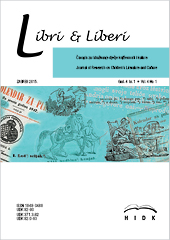Zlatni danci Jagode Truhelke – primjer kroatocentričnoga kulturnoga imaginarija
Zlatni danci by Jagoda Truhelka: An Example of a Croatocentric Cultural Imaginary
Author(s): Katarina IvonSubject(s): Language and Literature Studies, Croatian Literature
Published by: Hrvatska udruga istraživača dječje književnosti
Keywords: cultural imaginary; Jagoda Truhelka; Zlatni danci; national branding of space; Croatian children’s literature
Summary/Abstract: According to Croatian children’s literature historians, Crnković and Težak (2002), overstated Croatian patriotism and religiousness in Jagoda Truhelka’s work were reasons for avoiding it in official school curricula during the era of both Yugoslav states. Thus, her work was often evaluated on an extraliterary basis. The author’s autobiographical trilogy Zlatni danci [The Golden Days] is interpreted along these lines, to discern dominant motives and narratives which contribute to the reconstruction and interpretation of her cultural imaginary which may be described as Croatocentric. The author signals this by various means: Anica’s didactic patriotic “tirades” learned at school, descriptions of the teacher’s school and her salon, by reconstructions of children’s play imitating the battle of Siget (Croats vs. Ottomans), by telling the story of lumberjack Đorđo (an Istrian Croat) and his significant role in the battle for Vis. The element of space is also important in the trilogy, both because of its integrative role and as a meaningful indicator of cultural self-identification. The analysis implies that the imaginary of The Golden Days represents not only its author’s values, but also, to some extent, the values of the community that is represented.
Journal: Libri & Liberi: časopis za istraživanje dječje književnosti i kulture
- Issue Year: 4/2015
- Issue No: 01
- Page Range: 11-26
- Page Count: 16
- Language: Croatian

